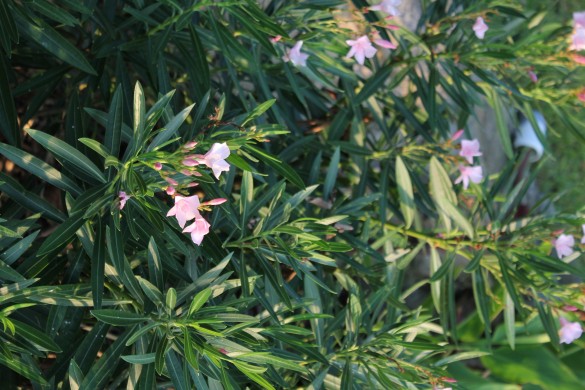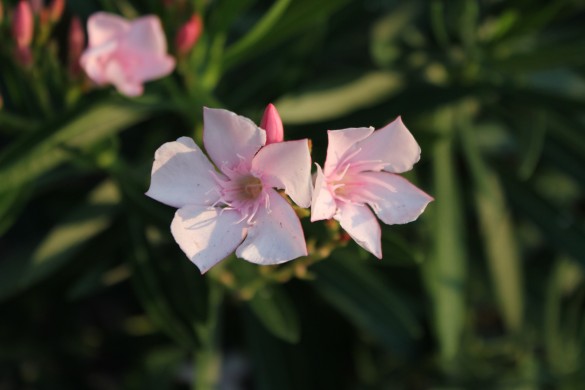 There are few flowers that equal the oleander in beauty and usefulness. The oleander is a river-side plant, inhabiting mainly parts of Western Asia and Southern Europe, and is a good living plant, as it is born into mud, water, and warmth. They are large plants, growing anywhere from 6.6-20 feet in height, with stems that splay outward as they mature. The leaves are in pairs of three, and the flowers grow in clusters at the end of each branch in white, pink, or red.
There are few flowers that equal the oleander in beauty and usefulness. The oleander is a river-side plant, inhabiting mainly parts of Western Asia and Southern Europe, and is a good living plant, as it is born into mud, water, and warmth. They are large plants, growing anywhere from 6.6-20 feet in height, with stems that splay outward as they mature. The leaves are in pairs of three, and the flowers grow in clusters at the end of each branch in white, pink, or red.
 Oleanders grow well in subtropical regions, and are extensively used as an ornamental plant in landscapes, parks, and along roadsides. They are drought-tolerant and will tolerate occasional light frost. Oleander flowers are showy and fragrant and are grown for those reasons. However, this beautiful shrub must be handled with care, as it has historically been considered a poisonous plant based on a number of its compounds that exhibit toxicity, especially to animals, when consumed in high amounts.
Oleanders grow well in subtropical regions, and are extensively used as an ornamental plant in landscapes, parks, and along roadsides. They are drought-tolerant and will tolerate occasional light frost. Oleander flowers are showy and fragrant and are grown for those reasons. However, this beautiful shrub must be handled with care, as it has historically been considered a poisonous plant based on a number of its compounds that exhibit toxicity, especially to animals, when consumed in high amounts.


